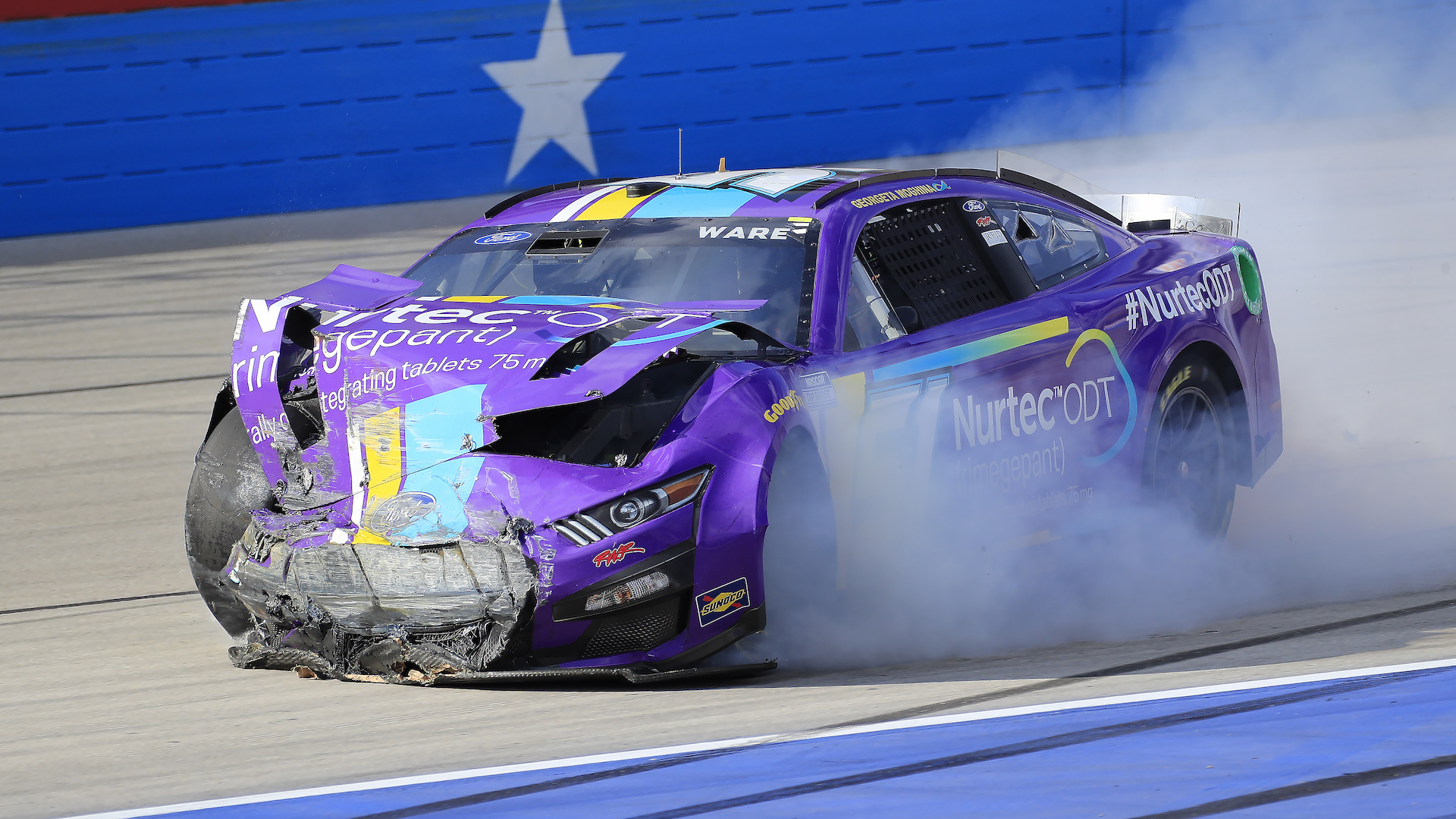

NASCAR failed to allay drivers’ concerns about the safety of its “Next Gen” spec chassis after nearly a full season of racing has shown their fears are justified—and that more chassis revisions are necessary. But after a drawn-out public campaign by current and former drivers, and a pair of potentially season-ending head injuries, those changes are now coming.
Criticisms of the Next Gen chassis first blossomed last spring when rumors circulated that a prototype car had “killed” a dummy in a crash test by being too stiff. NASCAR responded by conducting an unusual live-fire crash test that confirmed the car was too rigid in impacts, with the trial providing crucial data for improving the chassis’ safety. The resulting changes to the front and rear crash structures reduced their rigidity, allowing more energy to be absorbed in collisions. The drivers however were not satisfied with the changes, which haven’t prevented drivers from sustaining serious injuries in what has been a contact-heavy season of racing.

Beyond the Flag reports that Kurt Busch has been on the sidelines since his crash at Pocono Raceway in July after he reported concussion-like symptoms. On Wednesday, Alex Bowman confirmed he would sit out additional races to recover from his concussion, which was sustained at Texas Motor Speedway in September. While not season-ending, Cody Ware has also suffered a fractured foot from a crash in the Next Gen according to The Washington Post. To drivers, the cause is clear: The chassis is too stiff and needs a significant redesign.
“The car needs to be redesigned,” Denny Hamlin said at Talladega Superspeedway Heavy reported. “It needs a full redesign. I mean, it can still be called Next Gen, but it needs to be redesigned. It needs to be redesigned everywhere—front, middle, rear, competition. The whole thing needs to be redesigned.”
“We brought up these concerns with NASCAR last winter,” Hamlin added. “We, as the drivers, didn’t do that docu-series last year because we didn’t feel comfortable with this Next Gen car and the safety—the lack of safety testing—that had been done before they started announcing that they were going to run it.”

Hamlin added that other drivers have shared their own concerns about the car with him in private. His and other drivers’ pressure is having an effect at last though, as Road and Track reported NASCAR has confirmed to teams that it’ll deploy safety updates for 2022—and initial refits will be paid for out of NASCAR’s own pocket.
The specific changes were outlined by racing mechanic Bozi Tatarevic in a thread on Twitter, with most of the alterations concerning the car’s rear crash structure. Starting from the back, they begin with thinner bumper struts that are will deform more after impact. Ahead of them, the support for the fuel cell will have the bottom of its three boxed sections weakened by a kink, and its middle member removed entirely. On the back of the driver’s cell, a tubular V-brace will be eliminated, while the triangulated tubing below it will be downsized.
These tweaks will be carried out after the season by the series’ spec frame supplier Technique Chassis, which will return the frames to teams with only the finishing touches (such as paint) required. Based on simulations, this update is expected to effectively halve the severity of rear impacts according to Spire Motorsports driver Cory LaJoie.
“The new rear clip that they just tested takes about 50% of the G-load away on a rear impact,” LaJoie said on the podcast Stacking Pennies.
With change comes compromise. Road and Track reported the weakened crash structure will fatigue more quickly, and require refurbishment after smaller impacts. This’ll increase the Next Gen’s operating cost; a problem that these new cars were supposed to bring under control. In retrospect, it was inevitable that trying to fix almost every one of NASCAR’s car problems at once was going to have unintended consequences. For now, the series will have to compromise on some of the Next Gen’s grander goals just to ensure that drivers are willing to show up and race.
Got a tip or question for the author? You can reach them here: james@thedrive.com